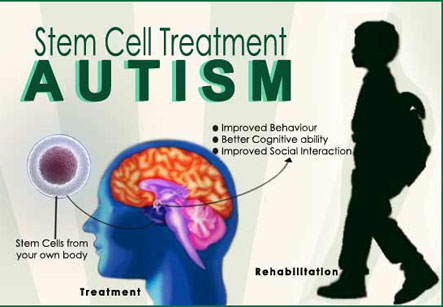Autism
Introduction
Autism is essentially a disability of social interactive skills and communications that is detected in early infancy. According to severity of symptoms and progression autism covers a spectrum of behavioral and developmental disorders and thus is often termed as Autism spectrum disorders or ASD. ASD is considered to be a condition with deranged or delayed development rather than a disease. ASD can often coexist with other medical and psychiatric conditions. Children with ASD can have gastrointestinal problems or may suffer from seizures, mental retardation, depression, anxiety disorder, obsessive compulsive disorder or even antisocial personality disorders.
Some studies have shown that stem cells and cord blood cells could help incude formation of new blood vessels from preexisting arteries for overcoming the lack of blood flow in autistic children.
Iranian scientists have moved to the forefront in embryonic stem cell research, according to a recent joint study by Harvard University and the Massachusetts Institute of Technology

Stem cells are primitive cells in the body that have the capacity to become any cell. Stem cells and bone marrow cells have been used since 1968 in patients with blood cancers like leukemia, aplastic anemia, lymphomas such as Hodgkin’s disease, multiple myeloma and even in ovarian and breast cancers.
Many of these stem cells can come from the cord blood or the blood in the umbilical cord that joins the baby to the mother in the womb. After birth the cord blood can be collected and processed to make stem cells into the desired cells. These cells can help in development of new blood vessels, increase the number of new cells.
Treatment
Inflammation and defects of immunity have been implicated in the causation of autism. Mesenchymal stem cells (MSC) and Cord blood cells are known to be potent stimulators of the immune system. There have been studies that combine the use of these in Autism.
Children with autism have been consistently shown to have impaired, or subnormal CNS circulation, as well as resulting hypoxia. Astroglial cells, or astrocytes in the brain, surround various portions of the cerebral endothelium around the brain blood vessels and play a critical role in regulating perfusion of the brain.
Some studies have shown that stem cells and cord blood cells could help incude formation of new blood vessels from preexisting arteries for overcoming the lack of blood flow in autistic children.
A group of doctors in Greece are preparing a protocol for submission to the Greek Ministry of Health for an official clinical trial of stem cell treatment on children with autism spectrum disorders. It remains to be seen whether the AdiStem clinical trials will provide evidence of success in autism.